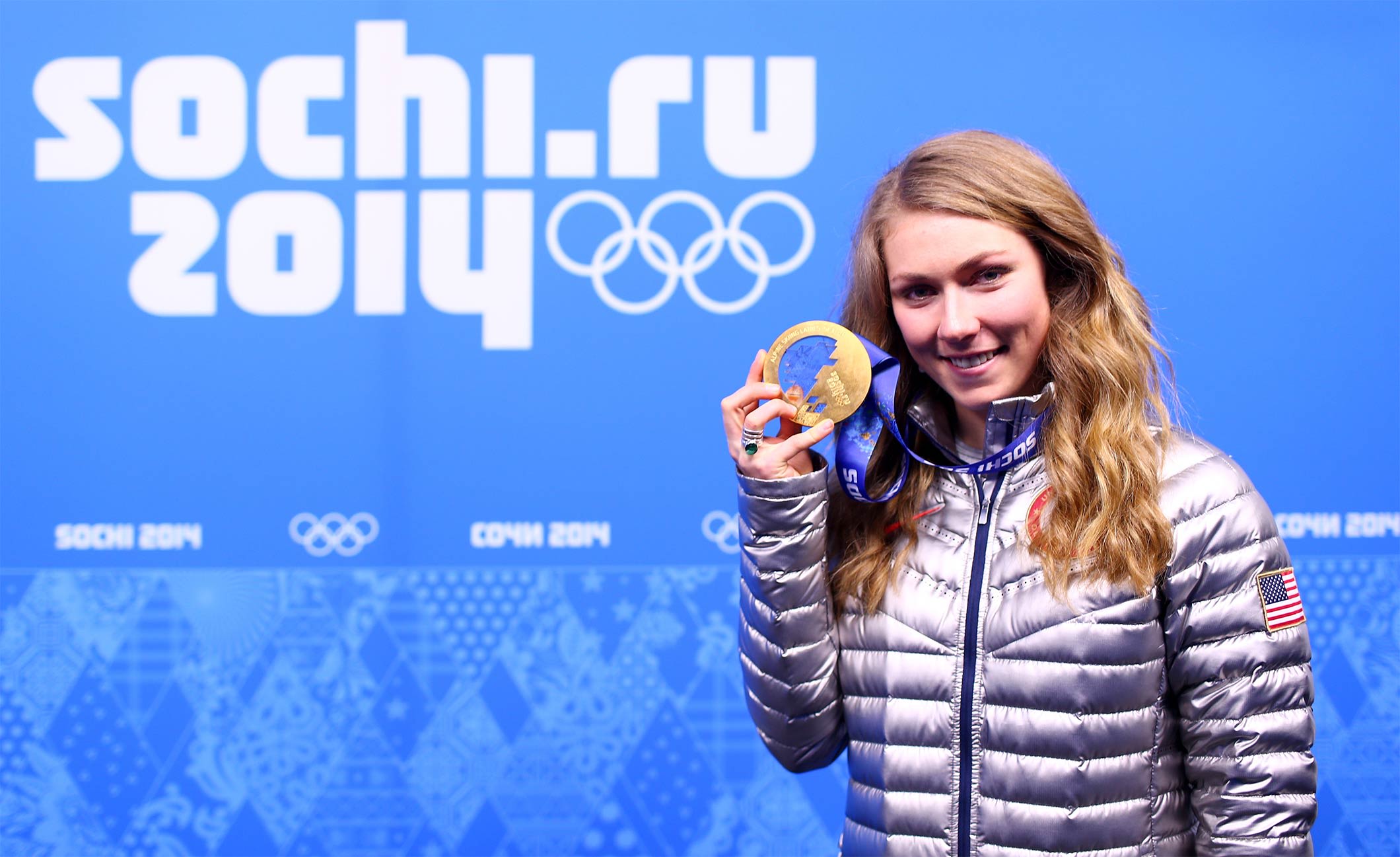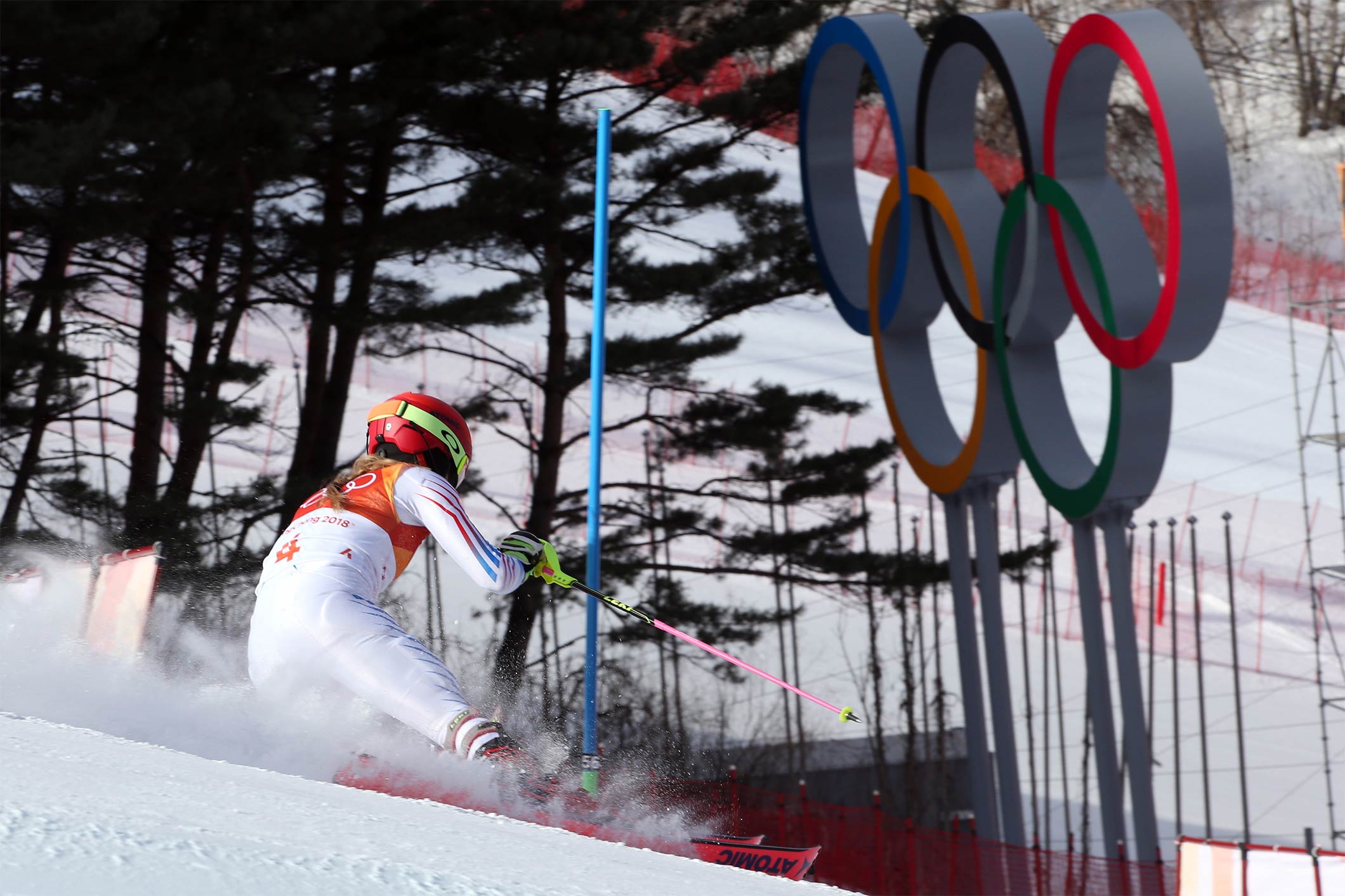On 21 February 2014, Mikaela Shiffrin opened her Olympic account aged 18!
Mikaela Shiffrin is now the world no. 1 in Alpine skiing, having broken several longstanding records on her way to the top. On 21 February 2014 at Rosa Khutor, she became the youngest ever Olympic slalom champion, at the age of 18 years and 345 days. Here, we take a look back at this achievement, and the many more that followed…
With the 2019-2020 World Cup season well underway, Mikaela Shiffrin, just 24, is continuing to push the boundaries in her sport. The world no. 1, who is on course to claim a fourth consecutive crystal globe, now holds the record – men and women combined – for victories in the slalom with 43, including 16 podiums in a row in the discipline, and counting.
In total, she has 66 World Cup victories to her name, the second highest number of any female skier in history, behind the 82 of compatriot Lindsey Vonn. And she showed in Lienz (Austria) on 28 and 29 December that she had the ability to win a giant slalom followed by a slalom in the space of 24 hours, with a considerable margin of victory in both events, recording the best time across the two races. She went on to win a downhill and a super-G in the same weekend, in Bansko (Bulgaria) on 24 and 26 January.
Since her first victory in the super-G on 2 December 2018 in Lake Louise (Canada), the skier from Colorado has become one of seven women to have won in all five Alpine skiing disciplines, but the only one to have also won parallel events. Her success in the 2018-2019 winter season was nothing short of remarkable: a record (men and women combined) 17 victories and 21 podium finishes; two world titles in Åre (Sweden) – the super-G and her fourth consecutive slalom title; and four crystal globes – the overall title and the slalom, giant slalom and super-G crystal globes – to finish the season with 2,204 points, the second highest total ever, behind the 2,414 points achieved by Slovenia’s Tina Maze in 2012-2013.
Mikaela Shiffrin and her quest to be the best
“Right now, I’m dreaming of the next Olympics [and] winning five gold medals, which sounds really crazy!” she said having just won her first Olympic gold medal in the slalom at the Sochi Winter Games on 21 February 2014, at the age of 18 years and 345 days. Six years on, with this dream sounding less and less “crazy”, we take a look back at her achievement at Rosa Khutor, which saw her become the youngest Olympic champion in the history of the discipline.

The princess of the 2014 Sochi Winter Games
In Sochi, Alpine skiing might have temporarily lost its queen, Lindsey Vonn, who was unable to compete due to a knee injury she had picked up in the World Championships in February 2013 in Schladming (Austria), but it found a new princess. The teenage Shiffrin displayed nerves of steel to clinch the Olympic title, adding to the world title she had won at the age of 17 and the 2013 crystal globe in the slalom to complete a remarkable treble.
Shiffrin, skiing with speed, precision and agility, delivered an almost insolent performance to put herself in pole position after the first run, building up a lead of 0.49 seconds over the reigning champion, Germany’s Maria Höfl-Riesch, and 0.67 seconds over double Olympic champion Tina Maze of Slovenia. Austria’s Bernadette Schild was in fourth place – 0.79 seconds behind Shiffrin – after the first run, with her older sister Marlies in seventh place (1.34 seconds) and compatriot Kathrin Zettel (1.38) just behind. Shiffrin was incredibly relaxed between runs, casually chatting to fans and signing autographs. The word “pressure” is not part of her vocabulary.
On the second run, Marlies Schild threw off the shackles and found new reserves of speed to clock the best time of the event (51.11 seconds) and storm into the lead. Zettel was in similarly inspired form, closing the gap with her compatriot to 0.29 seconds. Marlies could only look on in despair as her younger sister Bernadette skied off course and failed to finish. Höfl-Riesch and Maze both dropped out of the medal positions. Shiffrin, though, remained confident throughout, admitting later that although she was slightly nervous, she was also excited and just wanted to express herself. Once she properly got into her stride, she again began hurtling round the poles, even recovering from an error to hold her nerve and show why she could already lay claim to being the best slalom skier in the world. In the end, she claimed victory with a lead of 0.53 seconds over Marlies Schild and 0.81 seconds over Zettel.
Schild, a four-time Olympic medallist, had nothing but praise for her opponent: “You have to say that Mikaela is a sensational skier, and she's very quick.” Höfl-Riesch, the three-time gold medallist whose crown Shiffrin took, spoke about the new champion in equally glowing terms, highlighting how impressive it was to have won so many titles at 18 and hailing her as the best slalom racer in the world and fully deserving of her victory.

Onwards and upwards
Having started out as a specialist in the slalom, a discipline in which she is undefeated at the FIS World Championships (winning the title in 2013, 2015, 2017 and 2019), Shiffrin began to branch out into other disciplines in 2015, starting with the giant slalom before seamlessly transitioning to the speed events. Her talent across all disciplines saw her clinch her first overall crystal globe in the 2016-2017 season. She won her first downhill race in Lake Louise in the 2017-2018 winter season, in the run-up to the Olympic Winter Games.
At the PyeongChang Games, on 15 February in Yongpyong, she claimed her second Olympic title with victory in the giant slalom, in a race that was delayed by three days due to the weather. The slalom took place barely 24 hours later, and Shiffrin was unable to muster the physical and mental energy required to defend her title, ultimately finishing fourth, with Frida Hansdotter coming out on top. But she was back on the podium on 22 February, winning silver in the combined behind Switzerland’s Michelle Gisin and becoming the most decorated female American skier ever at the Winter Games in the process. She has gone from strength to strength since then, amassing crystal globes and taking her current tally to 11.
So what is it that drives Shiffrin, the first skier – male or female – to win 50 World Cup races before the age of 24? “I have every title that every ski racer might want to have,” she said. “But I feel like there’s always, always more you can do. Nerves and anxiety, for me, have started creeping in more and more because I’m starting to realise how important it is to me to be the best ski racer in the world. And also there’s a very good chance that somebody else [could] put in an ounce more effort, and they might be the reason that I never see that dream. It’s something that creeps into my mind.” More than records and titles, it’s this determination to remain the best in the world that pushes the American to add to her list of achievements, day after day, year after year, without any limits.
Many other Alpine skiing records – be it number of victories, crystal globes, world titles or Olympic medals – are now within her reach. She will be only 27 by the time the Beijing 2022 Winter Games come around. Success in all disciplines is a real possibility, and her dream from Sochi 2014 is still very much alive.